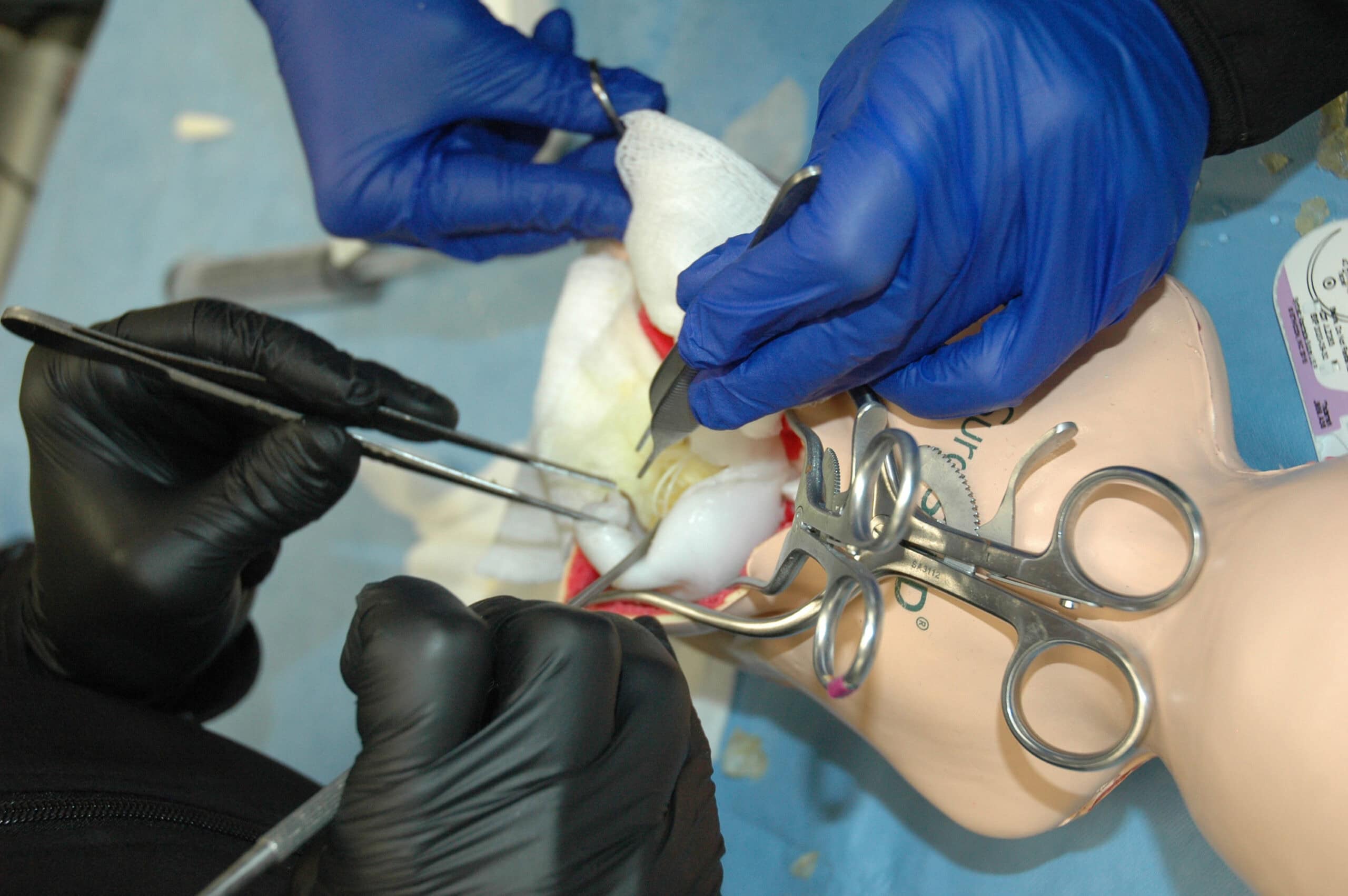UAMS Hosts Nation’s First Pediatric Green Lab for Neurosurgery Residents
| The University of Arkansas for Medical Sciences (UAMS) Department of Neurosurgery recently held its first “pediatric green lab” for neurosurgery residents — part of its ongoing efforts to provide training that is more sustainable, affordable and environmentally conscious.
“The course was unique, not only at UAMS but also in the nation, for resident teaching using pediatric models,” said T. Glenn Pait, M.D., the department’s interim chair.
The department first used synthetic cadavers in 2023, when it held a “green spine lab” to give residents hands-on experience in spinal surgery techniques without using actual cadavers, which are increasingly difficult to obtain, transport and store.
In both “green labs,” residents, medical students and faculty members performed procedures on 3D-printed synthetic teaching models. The one-day didactic experience included lectures by pediatric neurosurgery faculty Tomoko Tanaka, M.D., Eylem Ocal, M.D., and Gregory Albert, M.D., who performed surgical procedures with the residents.
A medical company, Surgical Training Utility Devices (Surgi-STUDs) produced and distributed the realistic models as an alternative to actual cadavers.
The synthetic bodies have skin and bone that looks and feels realistic but are easier to work with because they don’t have the same preservation requirements and deterioration issues of human specimens. In addition, the manufacturer can custom make the synthetic cadavers to accommodate the parts of the body and the conditions that will be emphasized in each lab.
The three synthetic cadavers used in the pediatric neurosurgery lab were built to train residents in common pediatric neurosurgery conditions, such as Chiari malformations, myelomeningoceles and craniosynostosis.
Available as whole bodies or in sections, the synthetic models are “replenishable,” which means they can be disposed of later or the chassis can be reused in another lab after being supplied with new parts.
The models have a cortiocancellous architecture that mimics human bone, provides excellent radiographic anatomy and permits the use of injectable bone cements.
“The hands-on experience provided by these synthetic specimens is an invaluable learning tool,” Pait said. “Particularly for the junior residents, this experience develops greater understanding and confidence in the operating theater.”
Other teaching hospitals that are phasing out the use of actual cadavers are experimenting with alternatives such as virtual reality, which requires residents to use a headset or a large screen with touch features to interact with a virtual cadaver. Others use preserved specimens or human cadavers preserved with plastic resins.
UAMS is unique in using the 3D-printed cadavers, which were introduced in late 2021.
At about the same time as the synthetic models became available, Pait was searching for a “green lab” option to avoid the escalating monetary costs of obtaining and disposing of human cadavers. He also wanted to find an alternative that would also increase sustainability and minimize UAMS’ carbon footprint.
Using synthetic cadavers also eliminates the costs of transporting biological specimens and storing them in temperature-controlled conditions with time limits.
